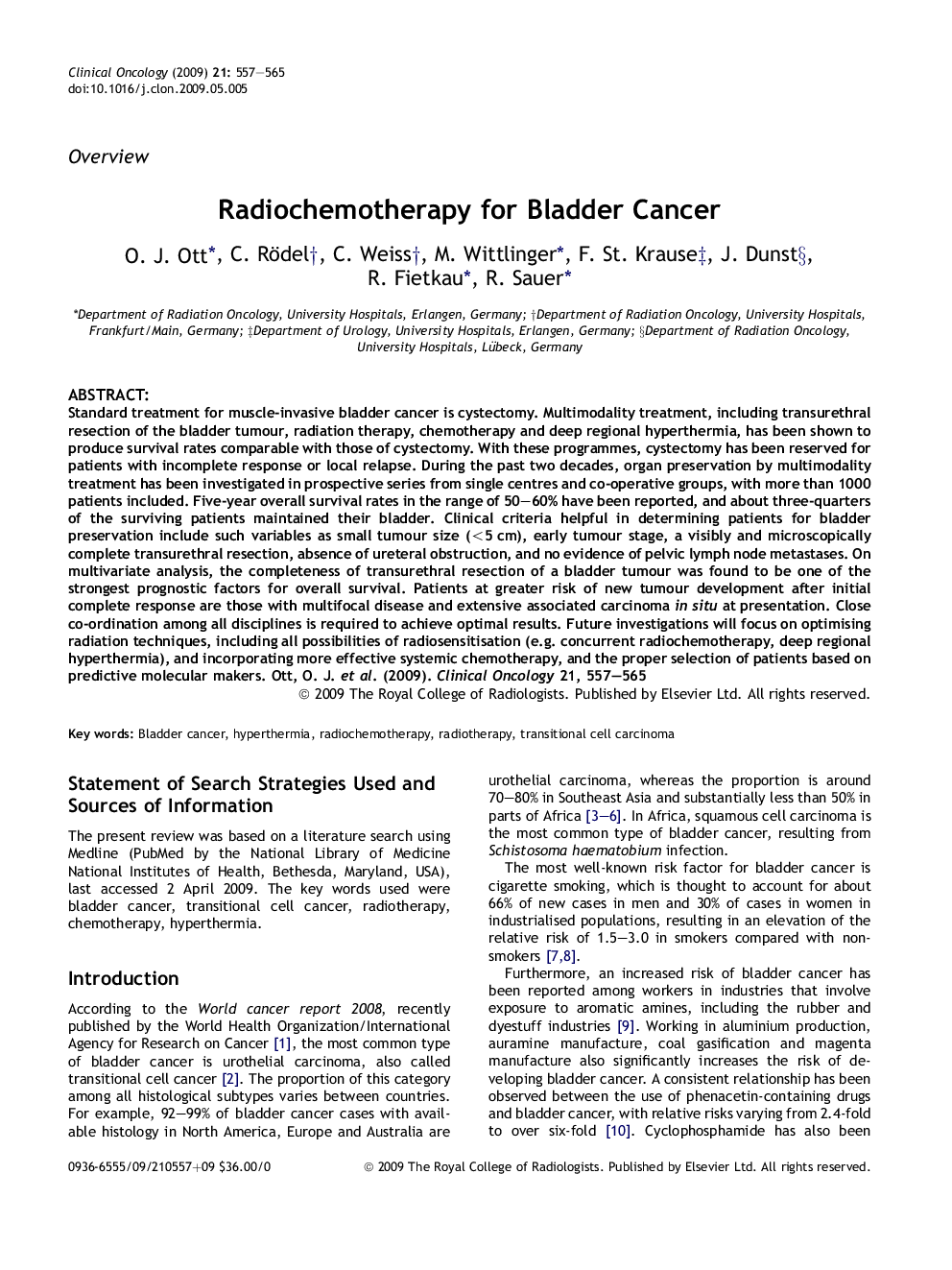| Article ID | Journal | Published Year | Pages | File Type |
|---|---|---|---|---|
| 5699223 | Clinical Oncology | 2009 | 9 Pages |
Abstract
Standard treatment for muscle-invasive bladder cancer is cystectomy. Multimodality treatment, including transurethral resection of the bladder tumour, radiation therapy, chemotherapy and deep regional hyperthermia, has been shown to produce survival rates comparable with those of cystectomy. With these programmes, cystectomy has been reserved for patients with incomplete response or local relapse. During the past two decades, organ preservation by multimodality treatment has been investigated in prospective series from single centres and co-operative groups, with more than 1000 patients included. Five-year overall survival rates in the range of 50-60% have been reported, and about three-quarters of the surviving patients maintained their bladder. Clinical criteria helpful in determining patients for bladder preservation include such variables as small tumour size (<5Â cm), early tumour stage, a visibly and microscopically complete transurethral resection, absence of ureteral obstruction, and no evidence of pelvic lymph node metastases. On multivariate analysis, the completeness of transurethral resection of a bladder tumour was found to be one of the strongest prognostic factors for overall survival. Patients at greater risk of new tumour development after initial complete response are those with multifocal disease and extensive associated carcinoma in situ at presentation. Close co-ordination among all disciplines is required to achieve optimal results. Future investigations will focus on optimising radiation techniques, including all possibilities of radiosensitisation (e.g. concurrent radiochemotherapy, deep regional hyperthermia), and incorporating more effective systemic chemotherapy, and the proper selection of patients based on predictive molecular makers.
Related Topics
Health Sciences
Medicine and Dentistry
Oncology
Authors
O.J. Ott, C. Rödel, C. Weiss, M. Wittlinger, F. St. Krause, J. Dunst, R. Fietkau, R. Sauer,
